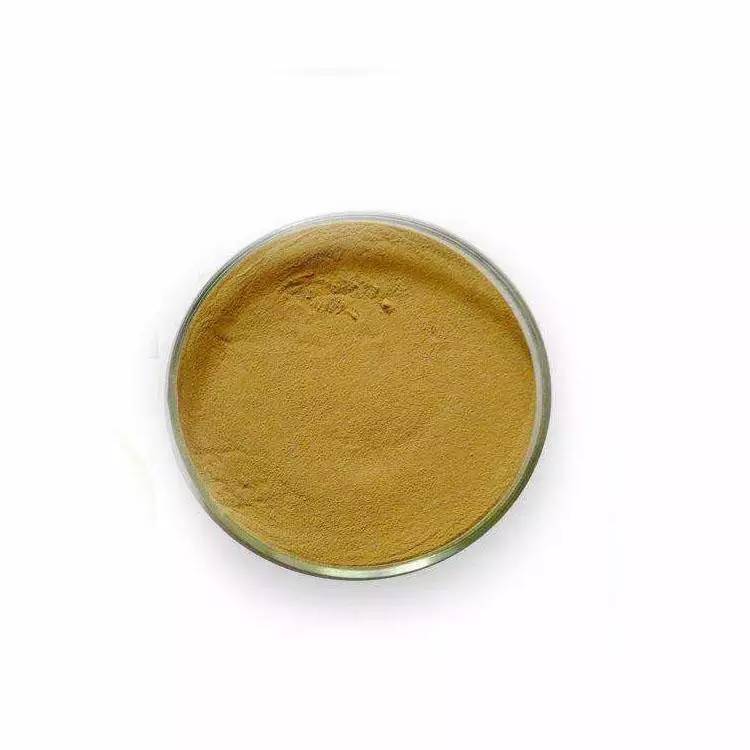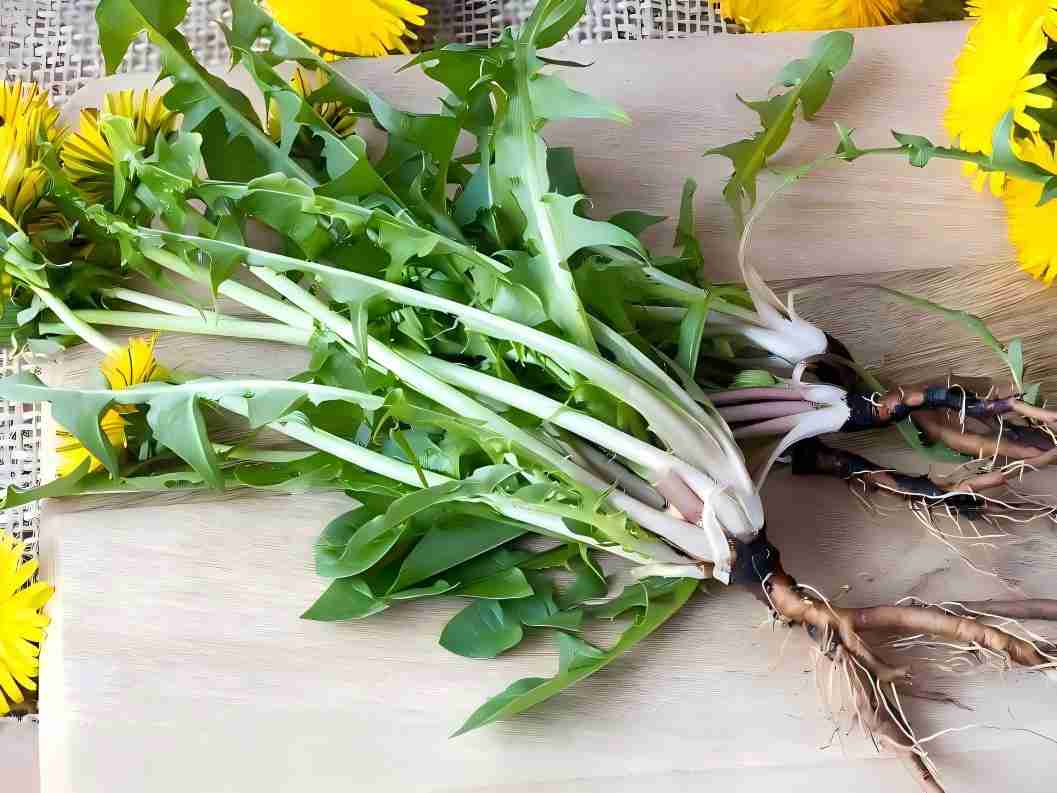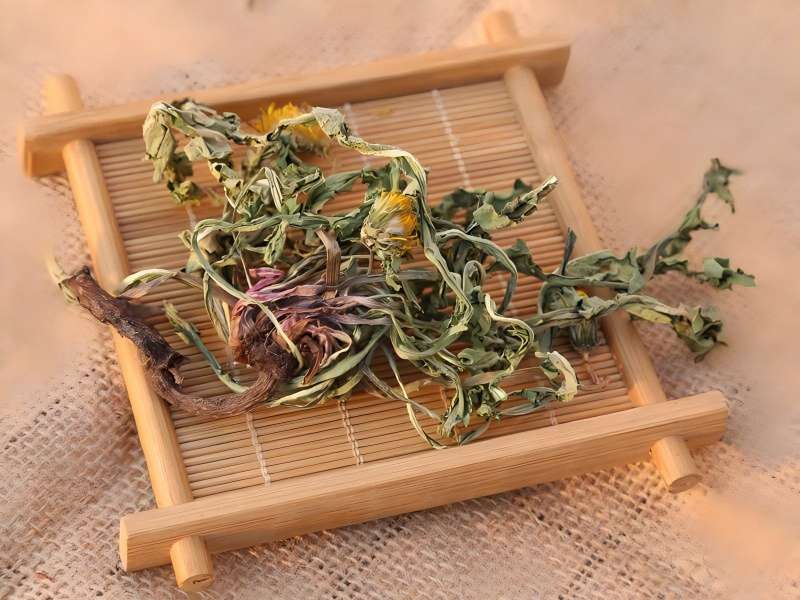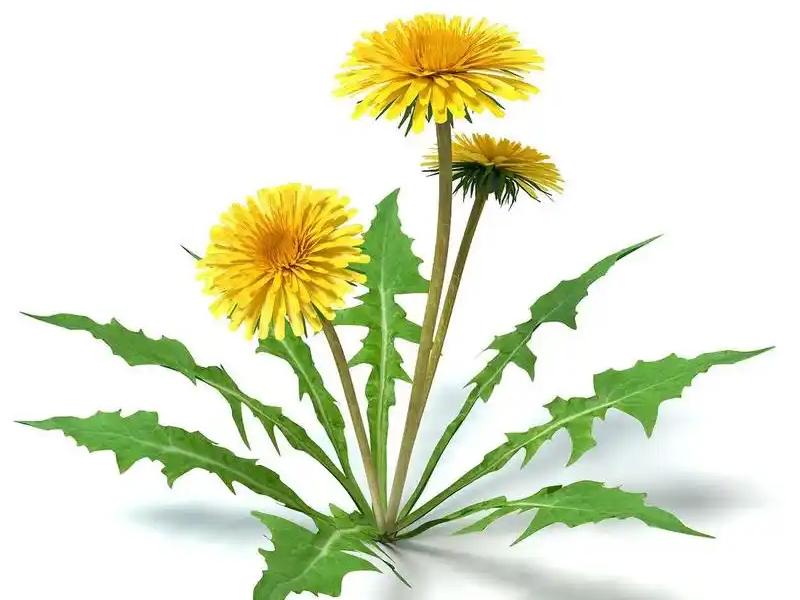What Is the Benefit of Dandelion Root Extract?
Dandelion is the dried whole herb of Taraxacum mongolicum Hand.-Mazz., Taraxacum borealisinense Kitam. or several plants of the same genus [1]. The plants in this genus are native to Europe and were introduced to China, where they are widely distributed in provinces such as Hebei, Shanxi, Gansu and Heilongjiang [2]. They have been studied in China for thousands of years. The Ming Dynasty's Compendium of Materia Medica records that dandelion is used to treat boils and scabies. Dandelion clears away heat and toxins, reduces swelling and disperses lumps, and promotes diuresis and urination. It is often used to treat boils, breast abscesses, lung abscesses, intestinal abscesses, scrofula, red eyes, sore throats, damp-heat jaundice, and painful hot urination [1]. Modern research has shown that dandelion contains polysaccharides, essential oils, flavonoids, sterols, phenolic acids, pigments and terpenes, and has pharmacological activities such as protecting the liver and gallbladder, lowering blood sugar, antibacterial, anti-oxidant, anti-inflammatory, anti-tumor and boosting immunity.
In recent years, the widespread clinical use of dandelion as a traditional Chinese medicinal herb, as well as its increased use as a food and health food, has led to a continuous increase in dandelion production to meet the surging market demand. Due to factors such as the different methods of harvesting medicinal herbs, the harvesting period, and the processing methods, the quality of raw medicinal herbs on the market varies greatly. However, the quality control of Chinese medicinal herbs is the basis and guarantee for the safe and effective clinical use of Chinese medicine.
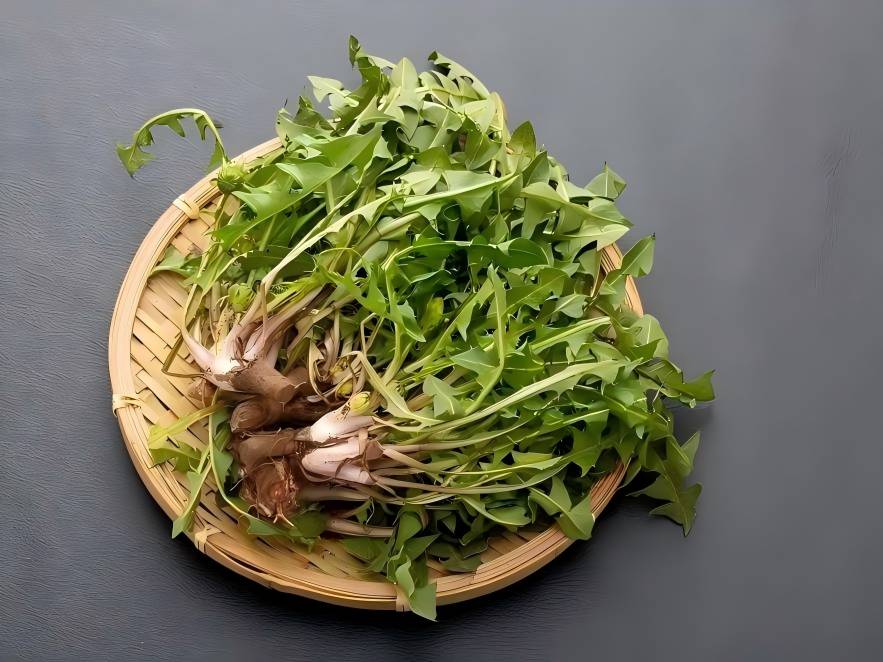
Therefore, in 2016, Academician Liu Changxiao proposed the concept of quality markers (Q-markers), which provides new ideas and methods for the quality control and quality evaluation of Chinese medicine [3]. Based on this, this paper provides a reference for the quality control and in-depth development of dandelion by analyzing and predicting its quality markers based on the traditional efficacy, modern pharmacological efficacy, and the validity and measurability of the chemical constituents of dandelion, in addition to summarizing the chemical composition and pharmacological effects of dandelion.
1 Chemical composition
Dandelion contains a wide variety of chemical components, mainly including flavonoids, phenolic acids, terpenes, sterols, polysaccharides, pigments, essential oils and coumarin compounds. Among these, flavonoids, phenolic acids and terpenes are the main pharmacologically active components of dandelion.
1.1 Flavonoids
Flavonoids are one of the main active ingredients in dandelion plants [3]. At present, 39 flavonoids have been found in dandelion [4, 5], including mainly luteolin and quercetin flavonoids and their derivatives. The total flavonoid content of dandelion in different parts of the same plant at the same time period (flowers>leaves>roots) varies significantly, which is consistent with its traditional medicinal part being the aboveground part [6]; and the flavonoid content of dandelion from different origins also varies greatly, which may be related to its growth environment and harvesting method [7].
1.2 Phenolic acids
Phenolic acids are one of the main active ingredients of dandelion, and they are abundant. The average content in dandelion flowers is 4.09% [8]. Hydroxycinnamic acid derivatives are the most abundant phenolic compounds in dandelion leaves and flowers, such as chicoric acid, caffeic acid, chlorogenic acid and monocaffeoyl tartaric acid [7, 9]. So far, 29 phenolic acids have been isolated from dandelion [10, 11].
1.3 Terpenoids
The terpenoids in dandelion plants are mainly triterpenoids and sesquiterpenoids [12-18], and the bitterness of dandelion mainly comes from terpenoids [19].
1.4 Sterols
Phytosterols are one of the main active substances in dandelion. Phytosterols can be isolated and identified from the whole grass, roots, leaves, flowers, pollen and other parts of dandelion plants. Pollen contains more phytosterols [12, 13]. The individual sterols in medicinal dandelion flowers, in descending order of content, are sitosterol, stigmasterol, and campesterol [20]. Except for stigmasterol and campesterol, other sterols mostly exist in the form of esters and rarely as glycosides [21, 22].
1.5 Polysaccharide compounds
Dandelion polysaccharides are one of the key components of dandelion that exert their pharmacological effects. They are abundant, accounting for about 30% to 50% of the dry weight [23]. The content of polysaccharides in various medicinal parts of dandelion has the following characteristics: root > flower > leaf [24]. Dandelion polysaccharides are composed of D-rhamnose, D-galactose, glucose, D-xylose and D-arabinose [25]. CaiL et al. [26] isolated two polysaccharides, DRP1 and DRP2, from dandelion root extract. Both polysaccharides are α-type polysaccharides and do not contain protein. In addition, dandelion root also contains a large amount of inulin [23].
1.6 Pigments
The flowers of dandelions contain a large amount of tetraterpene pigments, mainly luteolin epoxides [27], such as: apigenin, neoeriocitrin, luteolin, eriocitrin, violaxanthin, chlorophyll, taraxerol and its esters, which often form monoesters or diesters with some common saturated fatty acids [28].
1.7 Volatile oil compounds
The volatile oil of dandelion is complex in composition. Yang Chao et al. [29] extracted the volatile oil of dandelion using supercritical fluid CO2 extraction, and analyzed 26 components using GC-MS, accounting for 83.72% of the total volatile oil components, including linolenic acid, palmitic acid, oleic acid, ethyl palmitate, stearic acid, tricosane, etc.
1.8 Coumarin compounds
The coumarin components contained in dandelions mainly include esculin [10], scopoletin, umbelliferone, coumestrol, wild chicory glycosides, escin [30], luteolin [31], scopoletin, scopolamine, chicoric acid A, and chicoric acid.
In addition, dandelion is also rich in vitamins (A, C, E, K and B) and minerals (calcium, sodium, magnesium, iron, copper, silicon, zinc and manganese) [32].
2 Pharmacological effects
2.1 Antitumor effects
Modern pharmacological studies have shown that dandelion extract exhibits certain antitumor activity [33]. Its antitumor mechanisms of action include inducing apoptosis, inhibiting tumor cell proliferation by inducing apoptosis, inhibiting tumor angiogenesis, and exerting antitumor activity at the mitochondrial and genetic levels [33, 34]. Ovadje et al. [36] found that dandelion root extract can selectively and effectively induce apoptosis and autophagy in chronic myeloid leukemia (CMML) cells and human T-cell leukemia Jurkat cells, in a time- and dose-dependent manner. Aqueous dandelion root extract can activate multiple death pathways in cancer cells and cause them to express genes associated with programmed cell death [37]. The active ingredients in dandelion, including luteolin, β-sitosterol, α-linolenic acid, stearic acid, linolenic acid, palmitic acid, etc., have been shown to have anti-breast cancer effects. The mechanisms of action include blocking the cell cycle, promoting apoptosis and oxidative stress response, and inhibiting energy metabolism in breast cancer cells [39, 40].
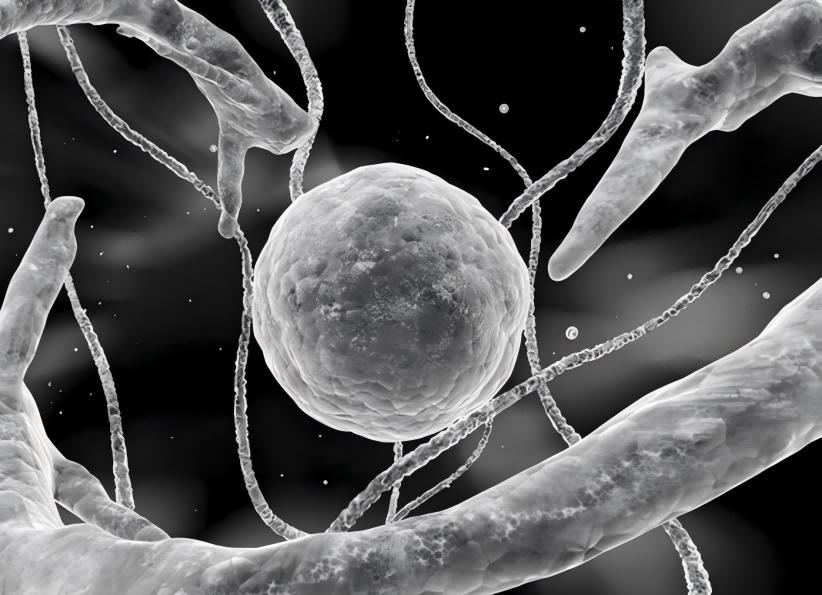
2.2 Hepatoprotective and choleretic effects
The hepatoprotective mechanism of dandelion may be antagonizing the damage to lysosomes and mitochondria of hepatocytes caused by endotoxin, relieving the toxic effects of endotoxin released after the action of antibiotics[27], and reducing oxidative stress[40]. In a choleretic experiment, the bile volume of anaesthetized rats increased by more than 40% after administration of dandelion injection or dandelion ethanol extract via the duodenum [41]. Both the dandelion injection group and the dandelion decoction gavage group were able to restore liver damage caused by carbon tetrachloride to some extent.
A water extract of dandelion root can improve antioxidant capacity and reduce lipid peroxidation, thereby protecting HepG2/2E1 cells and mice from alcoholic liver injury. Mice in the dandelion root ethanol aqueous extract group showed no signs of alcohol-induced liver toxicity, and the activities of aspartate aminotransferase, alanine aminotransferase, alkaline phosphatase and lactate dehydrogenase in their serum were significantly lower than those in mice given ethanol alone [42]. For hepatitis B, the antiviral properties of dandelion extract may help block protein synthesis steps and DNA replication, as well as improve the ability to cope with oxidative stress, thereby protecting liver cells. It is speculated that caffeic acid and luteolin-7-O-β-D-glucopyranoside may be the main active ingredients [43].

2.3 Broad-spectrum antibacterial effects
Dandelion extract has a significant inhibitory effect on Staphylococcus aureus, hemolytic streptococcus, Staphylococcus epidermidis, and catarrhal streptococcus [4]. Experiments have confirmed that the antibacterial principle of dandelion may be to inhibit the synthesis of cell walls, proteins, and nucleic substances [44]; accelerate the destruction of cell membrane integrity, leading to increased cell permeability, causing the exudation of metal ions, proteins, and saccharides, resulting in cell metabolic disorders, and thus cell death. In addition, dandelion extract has a certain inhibitory effect on Helicobacter pylori (HP), and it has the same effect on HP metronidazole-resistant strains and sensitive strains. It can be used clinically for the treatment of HP infection and as a remedial treatment after HP metronidazole resistance [45].
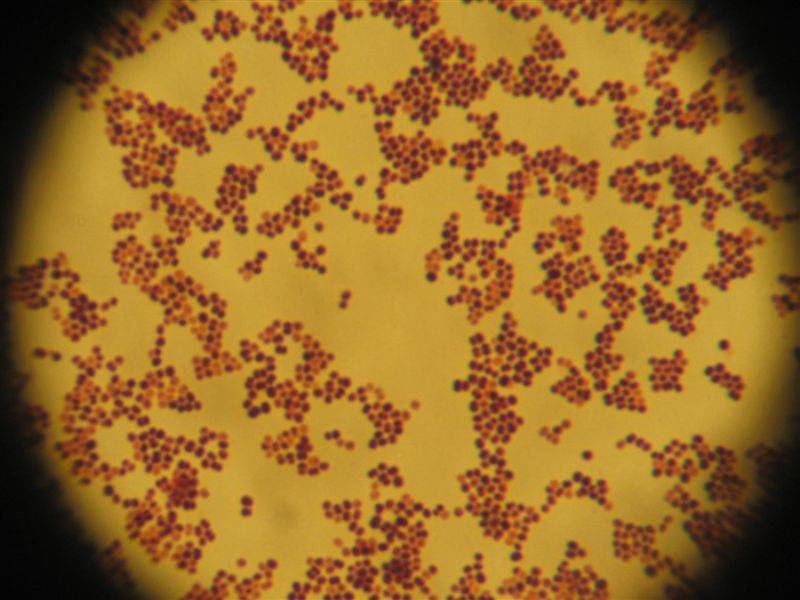
2.4 Antioxidant effect
The antioxidant effect of dandelion may be related to its high content of phenolic compounds, namely flavonoids and coumarin derivatives. The reducing activity of dandelion polyphenols is equivalent to 40% of ascorbic acid [46], and they have the ability to scavenge DPPH free radicals, ABTS free radicals and reduce iron [47]. Kim MY et al. [48] added a mixed leafy vegetable containing dandelion to a high-fat and high-cholesterol diet in mice. the antioxidant levels and the activities of antioxidant enzymes in mice were increased, and the lipid peroxidation in the plasma, liver, heart and kidney was significantly reduced. The antioxidant activity of dandelion methanol extract was measured by assessing its ability to scavenge DPPH radicals, and the IC50 value was 70.1 μg/mL [49]; moreover, the scavenging rate increased with the increase of sample concentration [50]. In addition, dandelion polysaccharides have also been shown to have certain antioxidant properties. After the wild dandelions in Xinjiang were graded and precipitated, four dandelion polysaccharide samples with antioxidant activity were obtained in sequence. When the polysaccharide mass concentration was 0.5 mg/mL, the DPPH scavenging rate reached 84.32% [51].
2.5 Anti-inflammatory effect
Dandelion can affect the expression of pro-inflammatory mediators. In lipopolysaccharide (LPS)-stimulated macrophages (RAW 264.7 cells), luteolin and luteolin-7-O-β-D-glucoside (<20 μM) contained in dandelion flower extract downregulate the expression of inducible nitric oxide synthase (iNOS) and cyclooxygenase 2 (COX-2), without affecting enzyme activity, affecting the production of nitric oxide, prostaglandin E2 and pro-inflammatory cytokines (TNF-α and IL-1) [46]; this process occurs through the inactivation of mitogen-activated protein kinase (MAPK) signaling and is dose-dependent [52]. The two main components of dandelion, luteolin and chicoric acid, can synergistically inhibit the inflammatory response by inactivating the PI3K/Akt pathway and impairing the transcription of nuclear factor κB (NF-κB) in lipopolysaccharide (LPS)-stimulated macrophages (RAW 264.7 cells) [53]. A high-dose extract of dandelion had a significant inhibitory effect on ear swelling caused by xylene, the formation of cotton ball granulomas, and toe swelling caused by egg white in mice and rats [54]. Histopathological examination also showed that dandelion alcohol can significantly relieve synovial hyperplasia, bone and cartilage damage, and inflammatory cell infiltration [55].
2.6 Immunomodulatory effect
Dandelion can restore the immune function of mice with burns, including cell-mediated immunity, humoral immunity and non-specific immunity, and has a dose-dependent effect [56]. Dandelion polysaccharides are believed to have immunomodulatory activity. They can significantly increase the spleen index, phagocytic index, thymus index, lymphocyte transformation rate and serum hemolysin OD value of mice, and promote the growth and development of mouse immune organs [57, 58].
2.7 Gastrointestinal tract effects
Dandelion extract may have a protective effect on the gastrointestinal tract by inhibiting gastric acid secretion, promoting bile secretion [59] and causing gallbladder contraction [32]. Experiments have shown that dandelion extract (10 g/kg) can inhibit gastric enzyme secretion by up to 97.6% [60]. Dandelion polysaccharides have been shown to regulate the intestinal flora [61], inhibit the production of UA and NO in the serum of mice with ulcerative colitis and dysbiosis, regulate the number of normal flora and probiotics, and have a significant effect on improving the intestinal flora imbalance caused by lincomycin in mice [62].
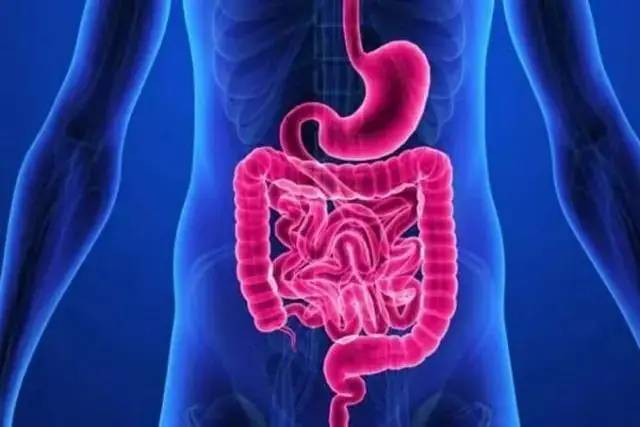
2.8 Cardiovascular function improvement
2.8.1 Lipid-lowering and anti-atherosclerotic effects
Dandelion can reduce the risk of atherosclerosis by reducing oxidative and inflammatory processes. Its extract has an effect on various risk factors for cardiovascular disease in experimental animals, such as obesity and hyperlipidemia [63]. Dandelion root and leaf extracts can reduce oxidative stress and lower the levels of total cholesterol, triglycerides, and low-density lipoprotein cholesterol in the blood serum, while increasing the level of high-density lipoprotein cholesterol in the blood serum. This can effectively prevent atherosclerosis associated with oxidative stress, reduce atherosclerosis-related indices, limit the extent of atherosclerosis, and researchers attribute these positive changes to chicoric acid [64, 65]. In addition, dandelion leaves are also believed to have a positive effect on the cardiovascular system due to their high potassium content (397 mg/100 g) [32].
2.8.2 Anti-obesity effect
A 60% ethanol extract of dandelion leaves (containing about 123 mg gallic acid per gram of total phenolics) was found to have anti-obesity properties in a rat model [66]; it can improve the lipid profile and the concentrations of aspartate aminotransferase and alanine aminotransferase in obese mice. Consumption of dandelion flower syrup with a normal fat diet does not affect body weight, and the syrup has a positive effect on the antioxidant status and prostaglandin content of obese rat models. Its main components are luteolin and hydroxycinnamic acid [67].
2.8.3 Anticoagulant and antithrombotic effects
Taraxerol, which is abundant in dandelion, has an activating effect on platelets. Taraxerol (50 g/mL) inhibits the adhesion of thrombin-activated platelets to fibrinogen by about 20%, inhibits ADP-activated platelet adhesion by about 40%, and inhibits arachidonic acid metabolism. In addition, dandelion leaf and petal fractions also exhibit anti-adhesion and anti-aggregation effects, and the leaf fraction exhibits stronger anti-platelet activity than the monomer chicoric acid, which may be due to the synergistic effect of phenolic compounds in the fraction [68].
2.9 Diuretic effect
The diuretic effect of dandelion leaf extract in rats is comparable to that of furosemide. Compared with other herbs such as horse chestnut and juniper berries, dandelion extract exhibits a stronger diuretic effect [32]. When dandelion water extract was given to male rats by gavage at a dose of 50 mL/kg, the body weight of the experimental group of rats decreased by about 30%. At the same time, because the high potassium content in dandelion leaves can compensate for the potassium lost with urine, the mice did not experience side effects such as hepatic coma and circulatory system disorders due to potassium loss [69]. Experiments have confirmed that dandelion's ethanol extract has a diuretic effect on the human body [70].
2.10 Hypoglycemic effect
Dandelion extract can significantly reduce the serum glucose concentration in rats after oral administration by improving insulin secretion and inhibiting α-glycosidase activity [71], and inhibit the hydrolysis of maltose and the absorption of glucose in the small intestine [72]. Water-soluble polysaccharide PD1-1 extracted from dandelion exhibits good antioxidant activity in terms of DPPH and hydroxyl radical scavenging capacity, and can inhibit α-glycosidase and α-amylase to reduce blood sugar [73].

2.11 Other effects
Dandelion extract can significantly improve the anti-fatigue ability of mice [74]; antagonize the micronucleus mutation of peripheral blood lymphocytes induced by cyclophosphamide [75] and upregulate the expression of estrogen receptors (ER-a, ER-b), progesterone receptors and follicle-stimulating hormone receptors [76].
3 Predictive analysis of dandelion quality markers (Q-markers)
Quality markers are chemical substances that are closely related to the functional properties of traditional Chinese medicine and are either inherent in traditional Chinese medicinal materials or formed during the processing and preparation of traditional Chinese medicine products (such as traditional Chinese medicine decoctions, traditional Chinese medicine extracts, and traditional Chinese medicine preparations). They are used as marker substances to reflect the safety and efficacy of traditional Chinese medicine [2]. The introduction of the concept of traditional Chinese medicine quality markers has provided new ideas for improving the quality standards of traditional Chinese medicinal materials and perfecting the traditional Chinese medicine quality standard system. Environmental and human factors can cause changes in the types and contents of dandelion's chemical components, and simple evaluation indicators cannot fully reflect the chemical quality of dandelion. Therefore, it is necessary to establish a more scientific and comprehensive dandelion quality evaluation system with exclusivity.
3.1 Q-Marker analysis based on plant kinship and exclusivity
The secondary metabolites of medicinal plants are often the main source of their pharmacological activities, such as phenolic acids, alkaloids, terpenes, etc. Plants of the same or similar origin often have similar pharmacological effects. The dandelion genus is one of the larger genera of the Asteraceae family (Compositae), and it is also one of the most evolved groups of the Asteraceae subfamily (Subfam. Liguliflorae DC.). There are about 300 species and more than 2,000 varieties worldwide. Due to its complex evolutionary relationships, the genus is distributed from the temperate zone of the Northern Hemisphere to tropical South America. Its center of distribution is in Central and Eastern Europe and Central and Eastern Asia[77].
There are a total of 70 species and one variety in China; they are distributed throughout the country except in the southeastern and southern provinces[78]. The chemical composition of Asteraceae mainly contains alkaloids, terpenes and essential oils[79]; the chemical composition of dandelion plants mainly includes flavonoids, phenolic acids, terpenes and polysaccharides, etc., which have pharmacological effects such as antibacterial, antioxidant and antitumor effects, and are similar to the basic chemical composition and pharmacological effects of dandelion. In addition, there are significant differences in the chemical composition of dandelions from different regions. These metabolites that produce differences are mainly phenolic compounds. KEGG pathway enrichment analysis shows that the main metabolic pathways are the biosynthesis of phenylpropanoids and flavonoids [80].
Taraxasterol is one of the unique components of dandelion. It is a pentacyclic triterpenoid compound with multiple biological activities. It has the advantages of high safety, low toxicity and side effects, and clear therapeutic targets, and has high medicinal value. At present, research on its pharmacological effects and mechanisms mainly focuses on anti-inflammatory, antioxidant, and anti-cancer effects [81]. Flavonoids and phenolic acids are one of the main active ingredients in dandelion. The 2020 edition of the Chinese Pharmacopoeia changed the quality control index of dandelion from caffeic acid (C9H804) to chicoric acid (C22H18O12), and the content was also changed from not less than 0.020% to 0.30%. It was determined that the content of chicoric acid in 10 batches of dandelion extracts from different origins ranged from 0.047% to 0.360% [82]. Therefore, both caffeic acid and chicoric acid can to some extent reflect the quality of dandelion medicinal materials.
In summary, based on the analysis of the botanical affinity and exclusive components of dandelion, the chemical components such as flavonoids, terpenoids and phenolic acids, such as dandelion sterols, chicoric acid and caffeic acid, can be used as one of the potential Q-Marker indicators of dandelion.
3.2 Q-Marker analysis based on the validity of chemical composition
3.2.1 Q-Marker prediction analysis based on traditional medicinal properties
The theory of Chinese medicine is based on the concept of the nature and properties of herbs and their relationship with the channels and collaterals. The three-way relationship between nature and properties, efficacy and medicinal substance should also be used as the basis for Q-marker prediction [83]. Dandelion is bitter, sweet, cold in nature and enters the liver and stomach channels. Studies have shown that flavonoids, polysaccharides and volatile oil components are the main substance basis of cold Chinese herbal medicines [84].
Triterpenoids are the main source of the bitter taste of dandelion. Bitter taste can purgative, can lower, can dry, can be firm, has the effect of purging, purging fire, lowering the gas, firm yin, dry dampness, etc. [85]. Traditional Chinese medicine theory believes that the bitter substances in bitter medicine are the active substances [86]. Modern research has found that the chemical components of bitter substances mostly include alkaloids, essential oils, glycosides, flavonoids and picrates, etc.[87]; in terms of pharmacological effects, bitter-tasting medicines mostly have anti-inflammatory and anti-cancer activities[88]. The sweet taste can nourish, soothe and harmonize. Sweet-tasting medicines mostly contain ingredients such as glycosides, proteins, amino acids and vitamins[89]. Modern pharmacological studies have shown that sweet-flavored medicines can regulate human body functions, supplement deficiencies, enhance the body's disease resistance, as well as have antipyretic, bactericidal, diuretic, hypolipidemic, hypotensive, and hypoglycemic effects [90]. In summary, the flavonoids, glycosides, and volatile oil components in dandelion can be used as important Q-Marker options.
3.2.2 Q-Marker prediction analysis based on traditional efficacy
Dandelion is bitter and cold in nature and is a good medicine for clearing away heat and detoxifying the body. It is good at dissipating boils and swellings, and is widely used clinically in treating heat-related diseases such as boils, mastitis, enteritis, bronchitis, etc. At the same time, dandelion has the effect of diuresis and unblocking the urinary tract, clearing dampness and heat, and is often used clinically to treat acute urinary tract infections. The Song Dynasty's “Compendium of Materia Medica” records: “The boiled water and juice are good for treating breast abscesses in women, and they are also good for applying to sores when mashed; they also treat thorns and fox urine thorns.” The Qing Dynasty's Yilin Zanyou records: “Dandelion can resolve heat-related toxins, relieve food poisoning, reduce swelling and abscesses, and treat boils and breast abscesses. It also promotes lactation and is used for its shape.
It strengthens teeth and gums and cools yang and yin.” Dandelion's antibacterial, anti-inflammatory, haemostatic, abscess-reducing and diuretic pharmacological effects are closely related to its traditional efficacy. Modern research has shown that the flavonoids luteolin and luteolin-7-O-β-D-glucoside [53, 91], phenolic acids chlorogenic acid, chicoric acid and caffeic acid [53, 92], the terpene dandelion sterol [93] and dandelion polysaccharides all have antibacterial, anti-inflammatory, antioxidant, and anti-tumor effects. These effects are consistent with the traditional efficacy of dandelion in clearing away heat and toxins, reducing swelling and dispersing knots, diuresis and unblocking the urinary tract, and are the main pharmacological substance basis for the traditional efficacy of dandelion. They can be used as an important basis for screening quality markers of dandelion.
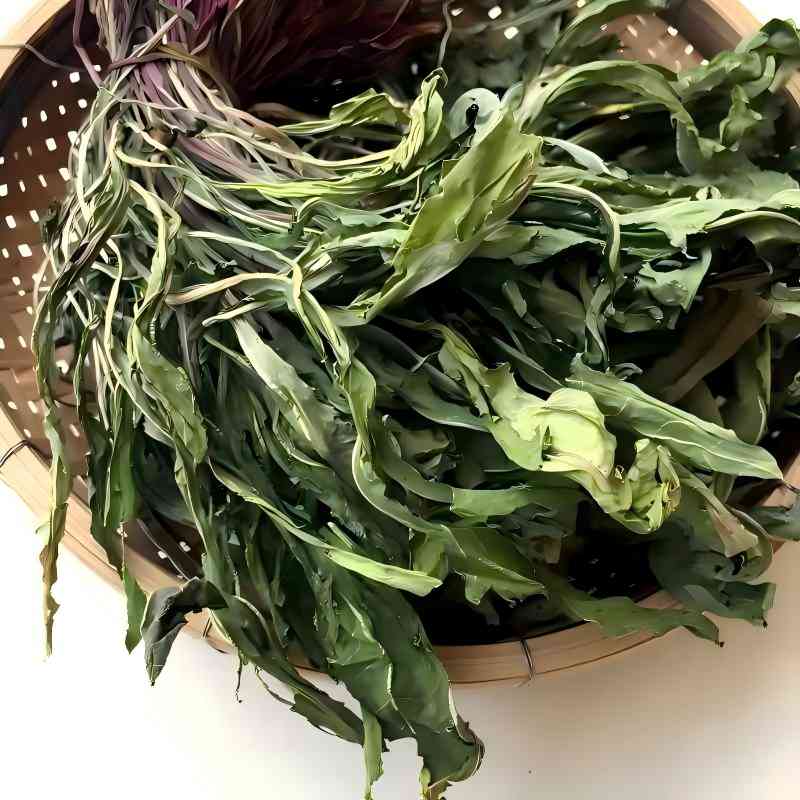
3.2.3 Q-Marker prediction analysis based on modern pharmacological effects
Dandelion and its extracts have been shown to have a variety of biological activities. Dandelion polysaccharides induce apoptosis in breast cancer cells by promoting the expression of P53 and Bax proteins and inhibiting the expression of Bcl-2 proteins, thereby inhibiting their proliferation and exerting an anti-breast cancer effect in vivo [93]; it has a strong scavenging capacity for OH, O2 and DPPH, there is a clear dose-effect relationship in its antioxidant effect [94]; it can significantly reduce Fe3+ and inhibit α-glucosidase activity, reduce blood glucose in diabetic mice, while also reducing MDA levels and increasing SOD and GSH-Px activity [95]; it promotes the growth and development of immune organs [96], enhances the expression level of the cytokine TNF-α secreted by macrophages [58, 97], promotes the proliferation of lymphoid subpopulations, and improves the structure of lymphoid subpopulations [98], thereby enhancing immune function; it can also protect against liver damage by regulating inflammatory responses [99] and reducing oxidative stress [100].
Taraxasterol in dandelion inhibits diabetes-induced endothelial dysfunction by activating the AMPK signaling pathway [101]; it can protect the liver in mice [102] and reduce total cholesterol and triglycerides [103]; it significantly inhibits the adhesion of resting platelets to collagen [104]; it stimulates the immune response by controlling the expression of the CD28/CTLA-4 stimulatory molecules and by regulating the Th1 cytokine IL -12 and inhibiting the expression of IL-10 to stimulate the immune response [105]. In addition, the caffeic acid in dandelion can achieve the effect of anti-hepatitis B virus and liver protection by regulating the synthesis and metabolism of bile acids [106]; it has strong cell antioxidant and immunomodulatory activity [107]. Ferulic acid and oleanolic acid in dandelion can promote gastrointestinal motility, and oleanolic acid is more active [108].
Dandelion contains a large amount of flavonoids, such as luteolin, which can improve oxidative stress and inflammatory response by inhibiting nitric oxide synthase (iNOS) [109]. Luteolin and its glycosides can regulate immune cytokines [110], reduce the inflammatory response by inhibiting inflammatory central mediators such as COX-2 and NF-κB [111]; luteolin-7-O-β-D-glucoside can significantly reduce blood glucose levels (62.33%, p≤0.05) and has no effect on blood glucose levels in non-diabetic mice [112]. Quercetin, luteolin and related flavonoids in dandelion inhibit pancreatic lipase in pigs [113].
Dandelion sterols can induce apoptosis by arresting the cell cycle at the G0/G1 phase, effectively inhibiting the growth of subcutaneous transplanted liver cancer in mice [114]. It also inhibits the proliferation of cancer cells CAL-27 in a concentration-dependent manner [115]; and protects against immune liver damage [116]. In summary, the polysaccharides in dandelion can exert antibacterial, antitumor, hypoglycemic, antioxidant, immunomodulatory, hepatoprotective and anti-fatigue effects; phenolic acids can exert anti-inflammatory, antibacterial, antioxidant, hepatoprotective and choleretic, hypolipidemic and immunostimulatory effects. Flavonoids can exert anti-inflammatory, antibacterial, antioxidant, hypolipidemic and immunomodulatory effects; triterpenoids can exert antibacterial, anti-inflammatory, anti-tumor, hepatoprotective, anti-apoptotic and immunomodulatory properties. Therefore, the dandelion polysaccharides, chicoric acid, caffeic acid, chlorogenic acid, ferulic acid, oleanolic acid, luteolin, luteolin-7-O-β-D-glucoside, quercetin and dandelion sterols in dandelion can be used as important bases for selecting Q-Markers that characterize their efficacy.
3.3 Q-Marker prediction analysis based on different harvesting methods
Dandelion has large differences in traits between wild and cultivated dandelions due to differences in growth and harvesting methods. The Chinese Pharmacopoeia stipulates that the whole grass of the Chinese medicine dandelion should be dug up when the flowers first bloom from spring to autumn, but the above-ground parts of artificially cultivated products are harvested 2-3 times a year, with almost no roots, fewer capitulum, and more leaves. The last harvest of the year is dug up with the roots; the whole grass of wild dandelion is dug up, with more roots, smaller leaves, and more capitulum [117].
Dandelions on the market are mainly cultivated artificially, so the harvesting method and harvesting period have a greater impact on the quality of dandelions. There are certain differences between the chemical compositions of wild and cultivated dandelions. Isochlorogenic acid A and luteolin are the compounds that differentiate wild and cultivated dandelions, and can be used as quality control indicators to identify and distinguish between the two [118]. In a study of wild and domestic dandelion samples from four origins, there was no significant difference in the contents of caffeic acid, chlorogenic acid and total flavonoids between wild and domestic dandelions, but the polysaccharide content of wild products was significantly higher than that of domestic products [194]. Therefore, the determination of isochlorogenic acid A, luteolin and polysaccharide content can be used as one of the quality control indicators for dandelion.
3.4 Q-marker prediction analysis based on the detectability of chemical components
The chemical substances contained in traditional Chinese medicine are complex, and only those that are stable and can be quantitatively measured can be used to better establish a quality control and evaluation system. Based on the above analysis, the flavonoids, phenolic acids, polysaccharides, and triterpenes in dandelion are all important choices for Q-markers. Flavonoids and phenolic acids are usually measured using chromatography, which is easy to operate; polysaccharides are mostly measured using the phenol-sulfuric acid method; and terpenoids are mostly measured using GC-MS, HPLC and mass spectrometry due to their complex composition and difficulty in isolation and identification.
Researchers [120] established a UPLC-MS method to simultaneously determine the contents of four index components in dandelion roots and leaves: coumaric acid, caffeic acid, luteolin, and luteolin-7-O-β-D-glucoside. In another study [121], HPLC fingerprints were established for 42 batches of medicinal dandelion collected from 8 places of origin, and the content of total flavonoids, chlorogenic acid, caffeic acid, chicoric acid and isochlorogenic acid A in the medicinal materials was measured. Dandelion polysaccharides are not yet used as an indicator due to their complex structure and difficulty in isolation and purification. Therefore, caffeic acid, luteolin, luteolin-7-O-β-D-glucoside, chlorogenic acid, chicoric acid and isochlorogenic acid A can be used as potential Q-markers for dandelion medicinal materials due to their good detectability.
4 Conclusion
Dandelion is a plant species with a wide variety of species, abundant resources, low price and definite efficacy. It has a medicinal history of thousands of years in China and is an important medicinal and edible resource with broad application prospects in the fields of medicine, health care and veterinary medicine. However, its quality is uneven due to factors such as planting, cultivation and harvesting methods, and there is currently a lack of systematic quality control standards. There is an urgent need to construct and improve its quality evaluation system.
In this paper, based on a review of the research on the chemical composition and pharmacological effects of dandelion, and guided by the theory of traditional Chinese medicine Q-Marker, the possible basis of medicinal substances is analyzed based on the phylogeny of dandelion plants, the specificity of chemical components, the effectiveness and measurability of chemical components, etc., and the Q-Marker is predicted and analyzed. It is initially inferred that luteolin, luteolin-7-O-β-D-glucopyranoside, caffeic acid, chlorogenic acid, chicoric acid and taraxasterol can be used as potential Q-Markers for dandelion medicinal materials. The construction and improvement of a scientific, reasonable and systematic dandelion quality evaluation system based on quality markers is of far-reaching significance for ensuring the safety and efficacy of clinical medication, and can promote the application of dandelion and the healthy development of the industry.
References:
[1] National Pharmacopoeia Commission. Pharmacopoeia of the People's Republic of China [S]. China Medical Science and Technology Press, 2020: 367.
[2] Li Jinghua, Liu Yuqin, Wang Liming. Research progress of Taraxacum plants [J]. Journal of Jilin College of Pharmacy, 2011, 32(3): 160-166.
[3] Liu Changxiao, Chen Shilin, Xiao Xiahe, et al. Quality markers in traditional Chinese medicine: a new concept for quality control of traditional Chinese medicine products [J]. Chinese Herbal Medicine, 2016, 47(9): 1443-1457.
[4] Xie Shenyang, Yang Xiaoyuan, Ding Zhanggui, et al. Chemical constituents and pharmacological effects of dandelion [J]. Natural Product Research and Development, 2012, 24(1): 141-151.
[5] Nie Wenjia, Xu Shuishi, Zhang Yongmei. Research progress on the active ingredients and pharmacological effects of dandelion [J]. Journal of Liaoning University of Traditional Chinese Medicine, 2020, 22(7): 140-145.
[6] Sun Shanshan, Zhang Qian, Ding Lin, et al. Determination of total flavonoids in dandelion and its effect on the humoral immune function of mice [J]. Journal of Jining Medical College, 2018, 41(4): 235-237.
[7] Li Chao, Dong Zibo, Jiang Jinlai et al. Determination of chicoric acid, caffeic acid and chlorogenic acid in dandelion by HPLC [J]. Chinese Herbal Medicine, 2015, 46(23): 3577-3580.
[8] Yang Lan, Li Huafeng, Diao Haipeng, et al. Determination of total phenolic acid and total flavonoid content in dandelion flowers and study of their antioxidant properties [J]. Food Science, 2011, 32(17): 160-163.
[9] Budzianowski J. Coumarins, caffeoyltartaric acids and their artifactual methyl esters from Taraxacum officinale leaves [J]. Planta Medica, 1997, 63(3): 288.
[10] Shi Shuyun, Zhou Changxin, Xu Yan, et al. Chemical composition of Mongolian dandelion [J]. Chinese Journal of Traditional Chinese Medicine, 2008(10): 1147-1157.
[11] Ling Yun, Bao Yanyan, Zhu Lili, et al. Research on the chemical composition of dandelion [J]. Chinese Journal of Pharmacy, 1997(10): 10-12.
[12] Schütz K, Carle R, Schieber A. Taraxacum-a review on its phytochemical and pharmacological profile [J]. Journal of Ethnopharmacol, 2006, 107(3): 313-323.
[13] Saeki D, Yamada T, In Y, et al. Officinatrione: an unusual (17S)-17,18-seco-lupane skeleton, and four novel lupane-type triterpenoids from the roots of Taraxacum officinale [J]. Tetrahedron, 2013, 69(5): 1583-1589.
[14] Huang Changjie, Lin Xiaodan, Li Juan, et al. Research progress on the chemical composition of dandelion [J]. Chinese Modern Traditional Chinese Medicine, 2006, 8(5): 32-33+35.
[15] Ling Yun, Xu Yang, Zheng Junhua. Research on the chemical constituents of dandelion triterpenes [J]. Chinese Herbal Medicine, 1998, (4): 224-225.
[16] Ageta H, Shiojima K, Masuda K, et al. Composite constituents: four new triterpenoids, neolupenol, tarolupenol and their acetates isolated from roots of a Japanese dandelion, taraxacum japonicum [J]. Tetrahedron Letters, 1981, 22(24): 2289- 2290.
[17] Jiang Xing, Zhao Min, Gao Xiaobo, et al. Chemical constituents of eudesmane-type sesquiterpenes from Dandelion [J]. Zhongnan Pharmaceutical Journal, 2016, 14(12): 1293-1297.
[18] Kisiel W, Barszcz B. Further sesquiterpenoids and phenolics from Taraxacum officinale [J]. Fitoterapia, 2000, 71(3): 269- 273.
[19] Hansel R, Kartarahardja M, Huang J T, et al. A sesquiterpene lactone- beta -D-glucopyranoside and a new eudesmanolide from Taraxacum officinale. [J]. Phytochemistry, 1980, 19(5): 857-861.
[20] Meléndez-Martínez A J, Britton G, Vicario I M, et al. HPLC analysis of geometrical isomers of lutein epoxide isolated from dandelion (Taraxacum officinale F. Weber ex Wiggers) [J]. Phytochemistry, 2006, 67(8): 771-777.
[21] Svoboda J A, Herbert E W Jr, Lusby W R, et al. Comparison of sterols of pollens, honeybee workers, and prepupae from field sites [J]. Archives of insect biochemistry and physiology, 1983, 1(1): 25-31.
[22] Wang Yaru, Li Yaming, Yang Na, et al. Research progress on the chemical composition and pharmacological effects of Taraxacum plants [J]. Special Product Research, 2017, 39(4): 67-75.
[23] Rao Zhiwei, Du Guang, Jiang Qiong, et al. Research progress of dandelion root polysaccharides [J]. Strait Pharmacy, 2019, 31(5): 34-36.
[24] Fu Xuepeng, Yang Xiaojie, Li Benli, et al. Determination of polysaccharide content and antioxidant properties of different organs of dandelion [J]. Food Research and Development, 2008, 29(3): 26- 28.
[25] Gao Jinbo, Sun Lina, Teng Yang, et al. Isolation, purification and preliminary structural analysis of dandelion root polysaccharides [J]. Chinese Journal of Modern Applied Pharmacy, 2010, 27(10): 905-908.
[26] Cai L, Wan D, Yi F, et al. Purification, preliminary characterization and hepatoprotective effects of polysaccharides from dandelion root [J]. Molecules. 2017, 25;22(9):1409.
[27] Ling Yun, Zheng Junhua. Research progress of the Chinese herb dandelion [J]. Chinese Journal of Modern Applied Pharmacy, 1998, 15(3): 10-13.
[28] Zhao Shouxun, Hang Bingqian. Chemical composition and pharmacological effects of dandelion [J]. Chinese Wild Plant Resources, 2001, 20(3): 1-3.
[29] Yang Chao, Yan Qingzi, Tang Jie, et al. Analysis of the composition of dandelion volatile oil and its anti-inflammatory and anti-tumor activity [J]. Chinese Journal of Traditional Chinese Medicine, 2018, 33(7): 3106- 3111.
[30] Peng Deqian, Gao Juan, Guo Xiumei, et al. Chemical constituents of Mongolian dandelion root [J]. Chinese Patent Medicine, 2014, 36(7): 1462-1466.
[31] Xu Dan, Hou Fengfei, Wu Lijun, et al. Chemical research on dandelion [J]. Chinese Journal of Traditional Chinese Medicine, 2004, 29(3): 278-278
[32] González-Castejón M, Visioli F, Rodriguez-Casado A. Diverse biological activities of dandelion [J]. Nutrition Reviews, 2012, 70(9): 534-547.
[33] Xiong Fuliang, Wu Shanshan, Li Xinyuan, et al. Research progress on the anti-tumor activity of dandelion [J]. Chinese Pharmacist, 2016, 19(7): 1363-1366.
[34] Ma P, Dong X, Swadley C L, et al. Development of idarubicin and doxorubicin solid lipid nanoparticles to overcome Pgp- mediated multiple drug resistance in leukemia. [J]. Journal of Biomedical Nanotechnology, 2009, 5(2): 151-161.
[35] Ovadje P, Chatterjee S, Griffin C, et al. Selective induction of apoptosis through activation of caspase-8 in human leukemia cells (Jurkat) by dandelion root extract [J]. Journal of Ethnopharmacology, 2010, 133(1): 86-91.
[36] Ovadje P, Chochkeh M, Akbari-Asl P, et al. Selective induction of apoptosis and autophagy through treatment with dandelion root extract in human pancreatic cancer cells [J]. Pancreas, 2012, 41(7): 1039-1047.
[37] Ovadje P, Ammar S, Guerrero J A, et al. Dandelion root extract affects colorectal cancer proliferation and survival through the activation of multiple death signalling pathways [J]. Oncotarget, 2016, 7(45): 73080-73100.
[38] Tian Miaomiao, Liu Yang, Liu Shumin. Research overview on the active ingredients and mechanism of dandelion in the treatment of breast cancer [J]. Chinese Pharmacy, 2019, 30(13): 1864-1867.
[39] Zhang X. Research on the anti-tumor active substance basis of dandelion and licorice metabolites [D]. Shanghai Jiao Tong University, 2013.
[40] Pfingstgraf I O, Taulescu M, Pop R M, et al. Protective effects of Taraxacum officinale L. (Dandelion) root extract in experimental acute on chronic liver failure [J]. Antioxidants, 2021, 10(4): 504.
[41] Shi Hegao. Preliminary pharmacological and clinical studies on the hepatoprotective effects of dandelion [J]. Chinese Journal of Traditional Chinese Medicine, 1979, (12): 55-56+23.
[42] You Y, Yoo S, Yoon H G, et al. In vitro and in vivo hepatoprotective effects of the aqueous extract from Taraxacum officinale(dandelion) root against alcohol-induced oxidative stress [J]. Food and Chemical Toxicology, 2010, 48(6): 1632-1637.
[43] Wu, Y H. Taraxacum mongolicum extract exhibits a protective effect on hepatocytes and an antiviral effect against hepatitis B virus in animal and human cells [J]. Molecular Medicine Reports, 2014, 9(4): 1381-1387.
[44] Liu Xiguang, Hu Yuanyang, He Huajun, et al. Ultrastructural observation of the effects of garlic, coptis and dandelion on Staphylococcus aureus [J]. Journal of Traditional Chinese and Western Medicine, 1986, 6(12): 737-739+710.
[45] Hu Wei, Wang Hong, Cheng Li, et al. Experimental study on the antibacterial effect of dandelion against Helicobacter pylori in vitro [J]. Gastroenterology, 2006, 11(6): 365-366.
[46] Hu C, Kitts D D. Dandelion (Taraxacum officinale) flower extract suppresses both reactive oxygen species and nitric oxide and prevents lipid oxidation in vitro [J]. Phytomedicine, 2005, 12(8): 588-597.
[47] Cui Yanping, Nie Wei, Chi Xiaojun, et al. Optimization of the extraction process and study of the antioxidant activity of dandelion polyphenols [J]. Anhui Agricultural Science, 2021, 49(8): 175-180.
[48] Kim M Y, Cheong S H, Kim M H, et al. Leafy vegetable mix supplementation improves lipid profiles and antioxidant status in C57BL/6J mice fed a high fat and high cholesterol diet [J]. Journal of Medicinal Food, 2009, 12(4): 877-884.
[49] Shi S, Zhao Y, Zhou H, et al. Identification of antioxidants from Taraxacum mongolicum by high-performance liquid chromatography-diode array detection-radical-scavenging detection-electrospray ionization mass spectrometry and nuclear magnetic resonance experiments [J]. Journal of Chromatography A, 2008, 1209(1): 145-152.
[50] Duan Hongbo, Liang Yinku. Extraction and activity research of dandelion polyphenols [J]. China Food Additives, 2017, (3): 80-86.
[51] Guo Huijing, Chen Guogang, Zhao Zhiyong. Study on the graded alcohol precipitation of dandelion polysaccharides and its hypoglycemic and antioxidant activities [J]. Agro-Products Processing, 2021, (7): 1-5+10.
[52] Koh Y J, Cha D S, Ko J S, et al. Anti-Inflammatory effect of Taraxacum officinale leaves on lipopolysaccharide-induced inflammatory responses in RAW 264.7 cells [J]. Journal of Medicinal Food, 2010, 13(4): 870-878.
[53] Park CM, Jin KS, Lee YW, et al. Luteolin and chicoric acid synergistically inhibited inflammatory responses via inactivation of PI3K-Akt pathway and impairment of NF-κB translocation in LPS stimulated RAW 264.7 cells [J].European Journal of Pharmacology, 2011, 660(2-3): 454-459.
[54] Ping Jiaqi, Liu Liben, Zou Juan, et al. Study on the anti-inflammatory effect of dandelion extract in vivo [J]. Journal of Yanbian University (Agriculture), 2010, 32(1): 52-55.
[55] Wang S, Wang Y, Liu X, et al. Anti-inflammatory and anti-arthritic effects of taraxasterol on adjuvant-induced arthritis in rats [J]. Journal of Ethnopharmacology, 2016, 187: 42-48.
[56] Luo Z H. The use of Chinese traditional medicines to improve impaired immune functions in scald mice [J]. Chinese Journal of Plastic Surgery and Burns, 1993, 9(1): 56-58+80.
[57] Chen Fuxing, Chen Wenying, Hao Yanshuang. Effects of dandelion polysaccharides on the immune organs of mice [J]. Advances in Animal Medicine, 2008, (4): 10-12.
[58] Gao HJ, Li X, Li CX, et al. Immunomodulatory effects of dandelion polysaccharides on immune-suppressed mice and regulation of TNF-α [J]. Journal of Jining Medical College, 2016, 39(6): 391-394.
[59] Li Y, Chen Y, Sun-Waterhouse D. The potential of dandelion in the fight against gastrointestinal diseases: A review [J]. Ethnopharmacol, 2022, 293:115272.
[60] You Chunlai, Han Zhaofeng, Zhu Dan, et al. The inhibitory effect of dandelion on gastric acid secretion in rats and its effect on gastric acid stimulants [J]. Pharmacology and Clinical of Traditional Chinese Medicine, 1994, 10(2): 23-26.
[61] Shi Dan, Zhang Yu. The regulatory effect of dandelion polysaccharides on the intestinal microecology of mice [J]. Advances in Microbiology and Immunology, 2016, 44(3): 49-53.
[62] Zhou Yani, Guo Yaodong, Liu Chengfei, et al. Research on the regulation of intestinal flora and anti-inflammatory effect of dandelion polysaccharide on mice with ulcerative colitis and dysbiosis [J]. Biomedical Engineering and Clinical, 2022, 26(4): 414-419.
[63] Swanston-Flatt S K, Day C, Flatt P R, et al. Glycaemic effects of traditional European plant treatments for diabetes. Studies in normal and streptozotocin diabetic mice [J]. Diabetes research and clinical practice, 1989, 10(2): 69-73.
[64] Olas B. New Perspectives on the effect of dandelion, its food products and other preparations on the cardiovascular system and Its diseases [J]. Nutrients, 2022, 14(7): 1350.
[65] Choi U K, Lee O H, Yim J H, et al. Hypolipidemic and antioxidant effects of dandelion (Taraxacum officinale) root and leaf on cholesterol-fed rabbits [J].International Journal of Molecular Sciences, 2010, 11(1): 67-78.
[66] Aabideen Z U, Mumtaz M W, Akhtar M T, et al. Anti-obesity attributes; UHPLC-QTOF-MS/MS-based metabolite profiling and molecular docking insights ofTaraxacum officinale [J]. Molecules, 2020, 25(21): 4935.
[67] Majewski M, Lis B, Juśkiewicz J, et al. The composition and vascular/antioxidant properties of Taraxacum officinale flower water syrup in a normal-fat diet using an obese rat model [J]. Journal of Ethnopharmacology, 2021, 265: 113393.
[68] Lis B, Jedrejek D, Moldoch J, et al. The anti-oxidative and hemostasis-related multifunctionality of L-chicoric acid, the main component of dandelion: An in vitro study of its cellular safety, antioxidant and anti-platelet properties, and effect on coagulation [J]. Journal of Functional Foods, 2019, 62: 103524.
[69] Râcz-Kotilla E, Râcz G, Solomon A. The action of Taraxacum officinale extracts on the body weight and diuresis of laboratory animals [J]. Planta Medica, 1974, 26(7): 212-217.
[70] Clare B A, Conroy R S, Spelman K. The diuretic effect in human subjects of an extract of Taraxacum officinale folium over a single day [J]. The Journal of Alternative and Complementary Medicine, 2009, 15(8): 929-934.
[71] Akhtar M S, Khan Q M, Khaliq T. Effects of Portulaca oleracae (Kulfa) and Taraxacum officinale (Dhudhal) in normoglycaemic and alloxan-treated hyperglycaemic rabbits [J]. The Journal of the Pakistan Medical Association, 1985, 35(7): 207-210.
[72] Li Xueshi, Zhang Yanwen. Hypoglycemic effect of dandelion water extract on streptozotocin-induced diabetic rats and its mechanism [J]. Chinese Herbal Medicine, 2013, 44(7): 863- 868.
[73] Guo H, Zhang W, Jiang Y, et al. Physicochemical, structural, and biological properties of polysaccharides from dandelion [J]. Molecules, 2019, 24(8): 1485.
[74] Yang Xiaojie, Fu Xuepeng, Liu Zhedong. Research on the anti-fatigue effect of dandelion polysaccharide [J]. Shizhen Traditional Chinese Medicine, 2008, 19(11): 2686-2687.
[75] Yang Xiaojie, Fu Xuepeng. Study on the antitumor and antimutagenic effects of dandelion polysaccharides in vitro [J]. Shizhen Traditional Chinese Medicine, 2009, 20(10): 2470-2471.
[76] Zhi X, Honda K I, Ozaki K, et al. Dandelion T-1 extract up-regulates reproductive hormone receptor expression in mice [J]. International Journal of Molecular Medicine, 2007, 20(3): 287-292.
[77] Gong Zhunan, Zhang Weiming, Liu Changhong, et al. Resources of the genus Taraxacum in China [J]. Chinese Wild Plant Resources, 2001, 20(3): 9-14+5.
[78] Yu Xiaofei, Wang Zhenyue, Zhang Di, et al. Comprehensive development and utilization of dandelion resources [J]. Chinese forest and sideline products, 2015, (5): 88-91.
[79] Jia ZY, Lin RC, Zheng HZ, et al. Correlation between the four-qi properties and chemical composition and efficacy of Asteraceae Chinese medicinal herbs [J]. World traditional Chinese medicine, 2015, 10(8): 1242-1245.
[80] Zhang S, Li C, Gu W, et al. Metabolomics analysis of dandelions from different geographical regions in China [J]. Phytochemical analysis, 2021, 32(6): 899-906.
[81] Ge B, Wang Z, Zhou H, et al. Research progress on the pharmacological effects of dandelion sterols [J]. Advances in Animal Medicine, 2020, 41(9): 102-105.
[82] Huang Yimin, Feng Huaye, Li Meizhen, et al. Determination of chicoric acid content in dandelion extracts from different origins [J]. Modern Food, 2021, (14): 177-178+186.
[83] Lv Chunyuan, Lv Shaowa, Li Guoyu, et al. Research progress on the pharmacological effects of Chinese medicinal herbs with different tastes and properties [J]. Chinese Journal of Traditional Chinese Medicine, 2018, 43(14): 2892- 2898.
[84] Chen Hui, Sun Hui, Yang Xiuyan, et al. Correlation between the nature of cold and hot properties of traditional Chinese medicine and its chemical composition categories [J]. Journal of Liaoning University of Traditional Chinese Medicine, 2016, 18(7): 103-106.
[85] Yan Yongqing, Wu Jianxin. The relationship between the bitterness of drugs and their channels, actions and chemical compositions [J]. Modern Applied Pharmacy, 1987, (5): 12-15+11.
[86] Lian Xiuyun, Wu Yunling, Feng Huishan. A brief discussion on the pharmacological characteristics and compatibility of bitter drugs [J]. Heilongjiang Traditional Chinese Medicine, 1999, (1): 52-53.
[87] Zhang Jingya, Cao Huang, Xu Jun, et al. Expression of bitter properties in traditional Chinese medicine and its application in clinical prescriptions [J]. Chinese Herbal Medicine, 2016, 47(2): 187-193.
[88] Lv Jiahua, Zhu Chan, Tang Zongxiang. The formation mechanism and biological significance of “bitterness” in the medicinal properties of traditional Chinese medicine [J]. Journal of Guangxi Normal University (Natural Science Edition), 2022, 40(5): 324-331.
[89] Zhang Jingya, Cao Huang, Gong Suhao, et al. Expression of the medicinal properties of the sweetness of traditional Chinese medicine and its application in clinical prescriptions [J]. Chinese Herbal Medicine, 2016, 47(4): 533-539.
[90] Yu Peiming, Tian Zhiyong, Lin Guitao. Discussion on the theory of medicinal properties of sweet-flavored medicines and their compatibility [J]. Shi Zhen Guo Yi Guo Yao, 2005, 16(1): 77-78.
[91] Hu C, Kitts D D. Luteolin and luteolin-7-O-glucoside from dandelion flower suppress iNOS and COX-2 in RAW264.7 cells [J]. Molecular and Cellular Biochemistry, 2004, 265(1-2): 107-113.
[92] Yang N, Dong Z, Tian G, et al. Protective effects of organic acid component from Taraxacum mongolicum Hand.-Mazz. against LPS-induced inflammation: Regulating the TLR4/IKK/NF-κB signal pathway [J]. Journal of Ethnopharmacology, 2016, 194: 395-402.
[93] Bu C, Wang R, Wang Y, et al. Taraxasterol inhibits hyperactivation of macrophages to alleviate the sepsis-induced inflammatory response of ARDS rats [J]. Cell Biochemistry and Biophysics, 2022, 80(4): 763-770.
[94] Niu H. Effects of dandelion polysaccharides on breast cancer cell proliferation and apoptosis [D]. Shandong University, 2017.
[95] Ge M, Miao Y, Sun L. Study on the antioxidant activity of dandelion root polysaccharides [J]. Heilongjiang Medical Sciences, 2014, 37(2): 39–41.
[96] Song Xiaoyong, Liu Qiang, Wang Zihua. Research on the hypoglycemic pharmacological effects of dandelion polysaccharides [J]. Chinese Pharmacy, 2009, 20(27): 2095-2097.
[97] Gao Huijie, Li Xiao, Li Chunxia, et al. Immunomodulatory effect of dandelion polysaccharide on immunosuppressed mice and its regulation of TNF-α [J]. Journal of Jining Medical College, 2016, 39(6): 391-394.
[98] Song Baohui, Nian Hong. Research on the regulation of dandelion and its polysaccharide extract on mouse immune function [J]. Chinese Food and Nutrition, 2011, 17(10): 68-70.
[99] Ma Hongmei, Zhu Yunfei, Wei Jun, et al. Effect of Tibetan dandelion polysaccharide nanomilk on mouse immune function [J]. Jiangsu Agricultural Sciences, 2013, 41(1): 214-216.
[100] Park C M, Jin K-S, Lee Y-W, et al. Luteolin and chicoric acid synergistically inhibited inflammatory responses via inactivation of pi3k-akt pathway and impairment of nf-κb translocation in LPS stimulated raw 264.7 cells[J]. European Journal of Pharmacology, 2011, 660(2-3): 454-459.
[101] Li Chunlan, Zhao Liang. Protective effect of dandelion polysaccharide on carbon tetrachloride-induced liver injury in mice [J]. Chinese Journal of Practical Neurology, 2010, 13(17): 33-35.
[102] Ma X, Zhang J, Wu Z, et al. Chicoric acid attenuates hyperglycemia-induced endothelial dysfunction through AMPK- dependent inhibition of oxidative/nitrative stresses [J]. Journal of Receptor and Signal Transduction Research, 2021, 41(4): 378-392.
[103] Choi B R, Cho I J, Jung S J, et al. Lemon balm and dandelion leaf extract synergistically alleviate ethanol-induced hepatotoxicity by enhancing antioxidant and anti-inflammatory activity [J]. Journal of Food Biochemistry, 2020, 44(8): e13232.
[104] Majewski M, Lis B, Juśkiewicz J, et al. Phenolic fractions from dandelion leaves and petals as modulators ofthe antioxidant status and lipid profile in an in vivo study [J]. Antioxidants, 2020, 9(2): 131.
[105] Lis B, Rolnik A, Jedrejek D, et al. Dandelion (Taraxacum officinale L.) root components exhibit anti-oxidative and antiplatelet action in an in vitro study [J]. Journal of Functional Foods, 2019, 59: 16-24.
[106] Kour K, Bani S. Augmentation of immune response by chicoric acid through the modulation of CD28/CTLA-4 and Th1 pathway in chronically stressed mice [J]. Neuropharmacology, 2011, 60(6): 852-860.
[107] Kilani-Jaziri S, Mokdad-Bzeouich I, Krifa M, et al. Immunomodulatory and cellular anti-oxidant activities of caffeic, ferulic, and p-coumaric phenolic acids: a structure-activity relationship study[J]. Drug and Chemical Toxicology, 2017, 40(4): 416- 424.
[108] Wu Yanling, Park Hye-sun. Study on the active components and chemical constituents of dandelion that promote gastrointestinal motility [J]. Journal of Yanbian University Medical College, 2005, 28(1): 23-25.
[109] Jeon I H, Kim H S, Kang H J, et al. Anti-inflammatory and antipruritic effects ofluteolin from perilla leaves [J]. Molecules, 2014, 19(6): 6941-6951.
[110] Wirngo F E, Lambert M N, Jeppesen P B. The physiological effects of dandelion (Taraxacum Officinale) in type 2 diabetes [J]. The Review of Diabetic Studies, 2016, 13(2-3): 113-131.
[111] Leyva-López N, Gutierrez-Grijalva E P, Ambriz-Perez D L, et al. Flavonoids as cytokine modulators: a possible therapy for inflammation-related diseases [J]. International Journal of Molecular Sciences, 2016, 17(6): 921.
[112] Ym J L, M N A. In vivo and in vitro antidiabetic potential of taraxacum officinale root extracts [J]. Current Issues in Pharmacy and Medical Sciences, 2020, 33(3): 168-175.
[113] Zheng C-D, Duan Y-Q, Gao J-M, et al. Screening for anti-lipase properties of 37 traditional Chinese medicinal herbs [J]. Journal of the Chinese Medical Association, 2010, 73(6): 319-324.
[114] Bao T, Ke Y, Wang Y, et al. Taraxasterol suppresses the growth of human liver cancer by upregulating Hint1 expression [J]. Journal of Molecular Medicine, 2018, 96(7): 661-672.
[115] Liu Xuechao, Guan Jian, Zhang Guoliang, et al. Effect and mechanism of dandelion sterols on the proliferation of human tongue cancer CAL-27 cells [J]. Trace Elements and Health Research, 2020, 37(2): 39-41.
[116] Liu Xinyu. Research on the protective effect and mechanism of dandelion sterols on alcoholic and immune liver damage in mice [D]. Yanbian University, 2018.
[117] Li Zhuojun, Wu Cui, Xu Bo, et al. Investigation of the harvesting, preliminary processing, storage, and packaging of dandelion [J]. Chinese Journal of Basic Medicine in Traditional Chinese Medicine, 2021, 27(3): 498-501.
[118] Liu Aipeng, Guo Liyao, Xue Zijing, et al. Quality control of dandelion medicinal materials based on fingerprint chromatogram and multi-component content determination [J]. Chinese Journal of Traditional Chinese Medicine, 2018, 43(18): 3715-3721.
[119] Yang Hui, Wang Jiansheng, Guo Baolin, et al. Comparative study on the quality of wild and cultivated dandelion [J]. Chinese Modern Traditional Medicine, 2017, 19(10): 1400-1402.
[120] Wang Chaozhong, Wang Mengmeng, Wei Qiang, et al. Simultaneous determination of the contents of four index components in dandelion root and dandelion leaf by ultra-high performance liquid chromatography-tandem mass spectrometry [J]. Medical Herald, 2020, 39(10): 1404-1408.
[121] Huixi Ke, Chao Li, Wei Gu, et al. Improvement of the quality standard of dandelion and quality evaluation of medicinal dandelion from different origins [J]. Chinese Pharmacy, 2021, 32(7): 818-824.


 English
English French
French Spanish
Spanish Russian
Russian Korean
Korean Japanese
Japanese